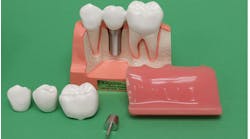Dentistry is no stranger to staffing challenges. The staffing crisis we’re facing today may last for at least five years. In a sense, we’re looking at a revolution in employment in most businesses, and certainly in the dental profession. Team members have a new mindset, so we need to understand what they care about and how we can create an environment and culture where they want to belong.
What do team members really want?
Team members in today’s dental practices are not the same as those from even just a few years ago. They have different expectations from their work, including:
A clear purpose. People want to have a sense that their work is meaningful and makes a difference. Dentistry offers this opportunity, but only if the practice culture is focused on optimal patient care with excellent customer service. These need to be embedded into the culture of the practice and discussed regularly by practice leadership/management.
Job satisfaction. Team members want a satisfying job, not just a paycheck. Certainly, people need their paycheck and must work for it, but they also want a feeling of satisfaction and will change jobs to achieve it. In some ways this may be a higher level of thinking: we have moved from transactional employment (“I pay you, and you do work”) to relationship-based employment, where people feel like they have great relationships with their coworkers, doctors, and patients. This is conducive to overall job satisfaction, which then leads to higher levels of staff longevity.
You might also be interested in ...
Trends and challenges that will reshape the dental profession—and what you should do now
Practicing dentistry during an unprecedented economic period
Consistent, ongoing training. The management thinking that was popular in the early half of the last century took a pessimistic view of employees. It was assumed that they disliked their work and if not coerced, controlled, and directed, they wouldn’t work hard. Thankfully that mindset is long gone. Team members want to be trained and prepared well to do their jobs. Many complex areas exist in practice management, including mastering technology, dealing with insurance companies, handling the day-to-day issues with patients, and managing financial factors. Team members strongly desire ongoing training, and when you give it to them, it demonstrates that the practice is willing to invest in them so they can perform at the highest level.
An easy, effortless, enjoyable environment. Before you overlook the importance of an environment like this, know that this concept comes from the Stanford Graduate School of Business. The main idea is that if you aren’t working in a way that is easy, effortless, and enjoyable, many people may find it not worth doing. It doesn’t mean that you don’t work hard, but it does mean that you enjoy it. This is a wonderful concept to bring into every dental practice. When the team can spend their days with excellent systems, training, and scripting, feeling like they are contributing and doing an excellent job, the days become truly easy, effortless, and enjoyable.
A social environment. We live in a world of social media with new ways of interacting and communicating. In this case, the spin-off is that your environment for the team should be social. Many team members want to come to work and enjoy the collegiality and teamwork of their coworkers; that’s what I mean by a social environment. Instead of sitting home on Sunday night resenting that you must go to work on Monday, they want to be optimistic about it. Weekends are great, vacations are great, but they also like going to work where they can be with coworkers who are friends. Internal environments of conflict and chaos will cause team members to seek positions elsewhere.
How do you get your staff to stay?
So, how do you build a social environment that will increase staff longevity? Here are some ideas:
Treat the team as customers. This is a revolutionary idea where you build a customer service plan each year for your team. How are you managing bonuses? Will you give any extra time off? Will you have an annual event such as a three-day trip or all-day off-site meeting? Build a customer service plan with your team members in mind. Think of them as customers who you want to have a five-star experience while working in your practice.
Plan surprises. Part of creating a fun social environment is surprises. Bring in lunch, stock the refrigerator with all kinds of goodies for the team, create a basket of miniature liquors that people can take home (don’t drink them in the office), hand out gift certificates, award prizes at staff meetings, hold off-site dinners and other activities, purchase gifts or books for your team members, and more. The list is endless and only limited by your creativity.
Demonstrate appreciation. Take time every day to appreciate your team. Let team members know how much you admire their work ethic, tell them when they do a good job, and point out how pitching in made a difference that day. We often believe we show appreciation, but we become so involved with day-to-day business that we forget to let team members know. Make sure you have daily appreciation goals and carry them out.
Celebrate goals. The team works hard, and when they achieve goals, there should be a celebration. Flowers, champagne, chocolates, or even time off can all be part of celebrating an achievement. Make sure team members are aware of the goals each year, know their progress toward those goals, and understand how to measure it. Make sure they know that not only do you appreciate their efforts, but you are taking time to celebrate them. This all goes to the heart of fun, which is my next recommendation.
Are we having fun? Some offices are just plain fun, and they keep their team for long periods of time. Team members respond to this type of environment and want to stay. Why would anybody leave a practice they enjoy being in to join another practice at just a small increase in income? In many cases, if team members are happy, they value that almost as much as money. If you are compensating them fairly, it’s unlikely they’ll ever want to leave your practice.
Joy is crucial to the dental practice. If doctors are following these recommendations, the team will have fun. This leads to efficiency, hard work, teamwork, and getting things done every day. Fun is hard to quantify, but it’s a major strategic factor in retaining team members and creating a positive working environment.
As dentistry continues to experience a staffing crisis, it becomes harder and takes longer to hire people with the right skill set, background, and experience for specific positions. Practices will have to provide more ongoing training and work with team members to create a positive culture and work environment. This will give your team members reasons and rationale to stay with your practice.
Every dentist and office manager needs to rethink the definition of leadership. Compassion, caring, and understanding all go a long way toward building a team that is relationship based and not transactional. Relationship-based teams create the easy, effortless, enjoyable environment that every dental practice would love to have.
Editor's note: This article appeared in the April 2023 print edition of Dental Economics magazine. Dentists in North America are eligible for a complimentary print subscription. Sign up here.






